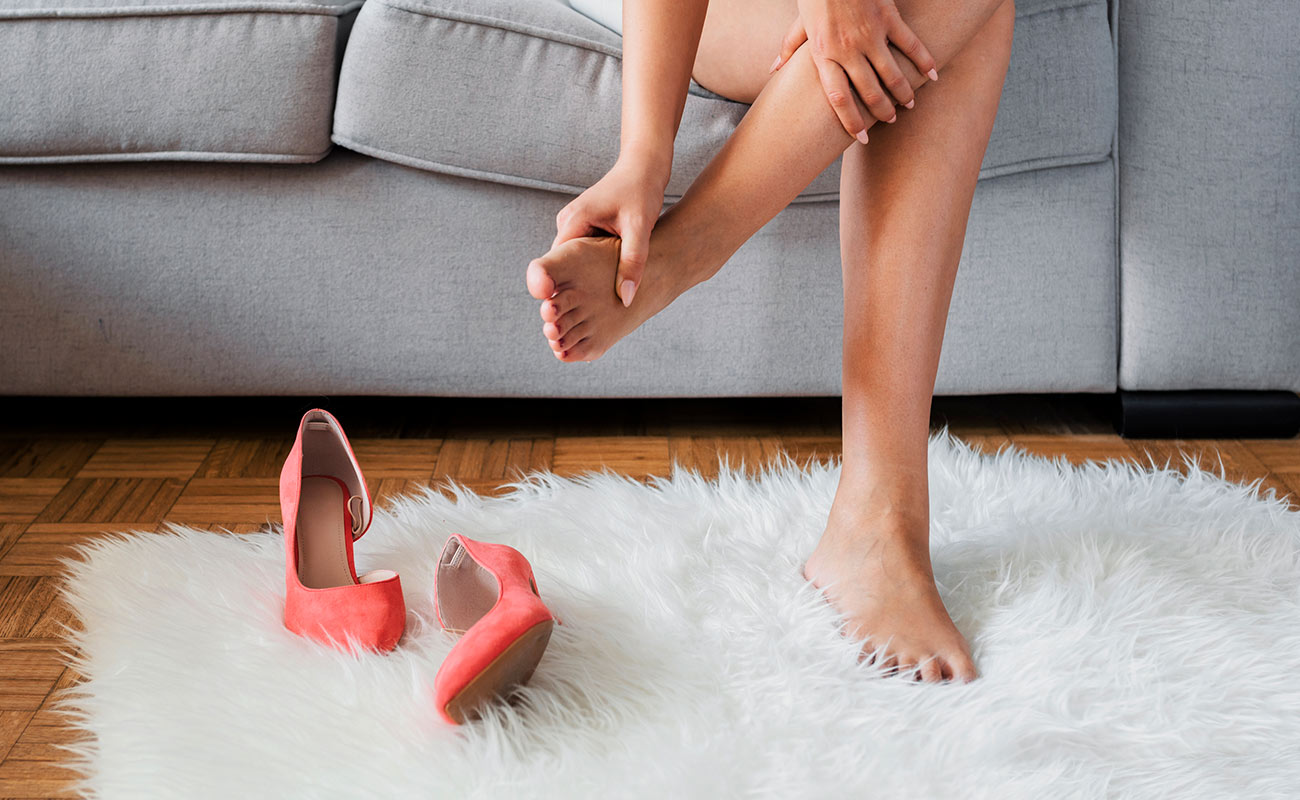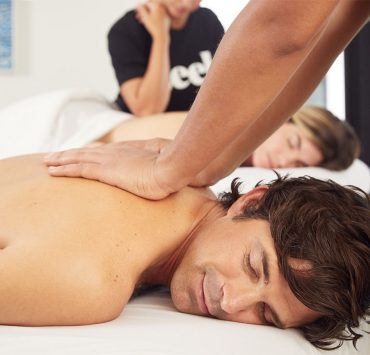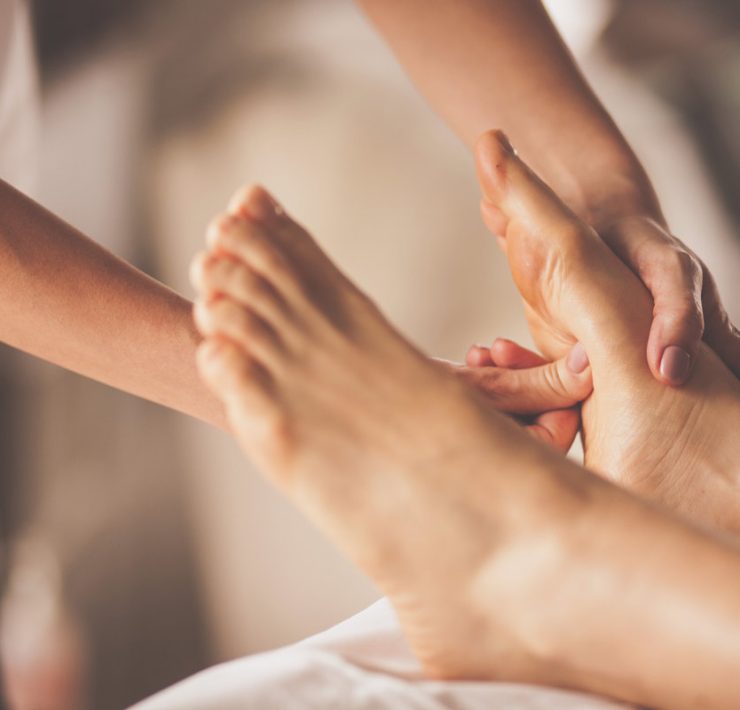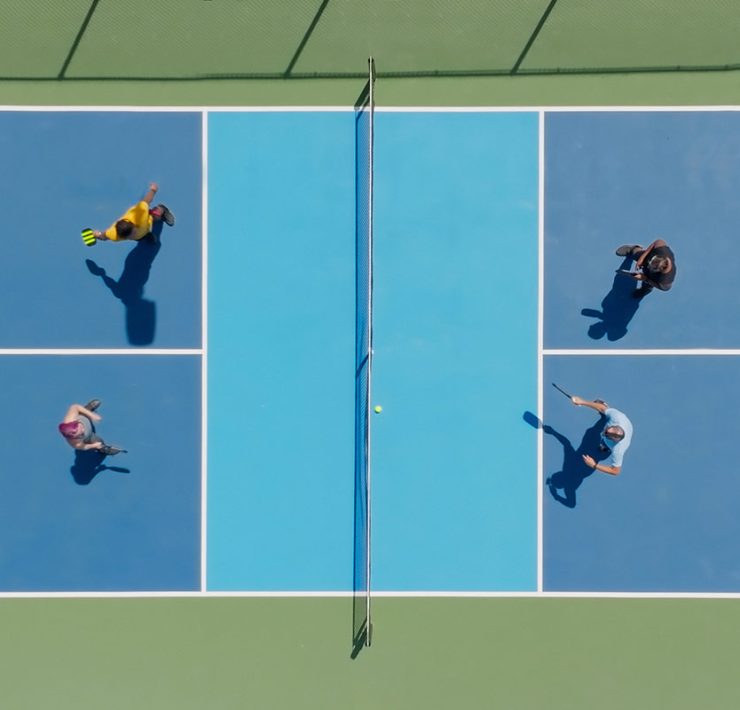The holiday season has come to a close, which can bring a welcome reprieve from the suits, ties, little black dresses, sparkly accouterments, and especially uncomfortable shoes that go along with holiday dress-up season. As you rub your aching feet, you may be wondering, What happened to the nice slender feet of my youth…and why the heck does my big toe hurt so much?? Friend, you may be dealing with a bunion.
What is a Bunion?
Bunions are bony bumps that develop on the side of the foot, typically at the base of the big toe joint—namely, the first metatarsophalangeal joint—often causing pain, inflammation, and discomfort. A similar phenomenon can form at the base of the pinky toe, charmingly known as a “bunionette” or “tailor’s bunion.” Medically speaking, a bunion is referred to as a hallux valgus deformity. Much less fancy-sounding indeed.
Bunions affect about a third of the population and are more common in women than men.
What Causes Bunions?
Bunions can occur without any rhyme or reason, but, generally speaking, they form when the big toe pushes against the neighboring toe, leading to an abnormal joint alignment resulting in a swollen, protruding bump. This can be the result of genetics, foot stress from certain activities, or wearing ill-fitting shoes over long periods. Bunions can also correlate with unusual gait mechanics, potentially related to muscular imbalances, or even the shape of the metatarsal bone itself—some bones are rounder on their distal end, which decreases the joint stability[ref].
Additionally (and you’ve probably heard this before), shoes with a narrow toe box can force toes into a misaligned position. Worn over years, this can cause bunions or bunionettes. Notoriously, high heels are often a culprit as those shoes combine a narrow toe box with an unnatural amount of body weight placed on the metatarsophalangeal joint. Imagine the bunions poor Barbie would endure, were she a real human.
How Are Bunions Treated?
There are a variety of ways to help treat—or at least slow the development of—bunions, though severely affected patients often resort to one of many types of bunion surgeries. The recovery from bunion surgery can be quite intense, however (including being off your feet for weeks), and temporarily impact quality of life, so many people try to delay surgery as long as possible—understandably!
Self-care techniques one can employ to ease the symptoms and slow the formation of bunions include:
- Bunion-unfriendly footwear: First and foremost, wear shoes that don’t apply pressure to your toes and toe-box area. Altra and Xero shoes are known for their wide toe boxes, as well as Vivaia, Birkenstocks, and Uggs. There are lots of great options out there, and you needn’t be limited only to Crocs to get a comfy shoe that’s kind to your metatarsals.
- Ice: Bunion sufferers might be surprised how much of the built-up tissue is actually latent swelling, which can feel as hard as a rock. Start a routine of icing to help address the quantity of tissue which could then improve shoe fit and gait.
- Elevate: And we mean really elevate. Gently putting your feet up in a recliner after a long day is pleasant, but you’ll get real relief from inflammation by putting your feet way up, against a wall—legs straight up, butt against the wall, forming a 90-degree angle with your body.
- Braces and splints: There are braces meant to be worn while doing your day-to-day activities and there are special “bunion corrector” splints that are worn while sleeping
- Physical therapy: physical therapists can help address abnormal gait patterns that may be contributing to the bunion in addition to restoring strength and mobility to the affected foot and toe.
Can Massage Help Treat Bunions?
While massage is not a cure for bunions, it’s a great non-surgical option to help treat the painful symptoms associated with bunions—and delay bunion surgery.
Therapeutic massage for bunions will include bodywork on the muscles in your calf and shin, in addition to massage on the arch of your foot, and gentle range of motion work between your first and second metatarsals. Note that massage directly on the bunion will likely not occur, and your massage therapist will always want to work within your area of pain tolerance, so always be communicative with them!
Why does massage help bunions?
Massage is great at relaxing the muscles and other connective tissue and fascia that may be pulling your toe into a bunion-causing position. Massage will also help to reduce inflammation in and around the bunion and increase blood flow to the area. Blood flow contains building blocks for the body to repair itself, so increased blood flow helps to increase healing.
Massage can also decrease pain by easing muscular contraction, increasing mobility, and reducing levels of cortisol in the body—all of which can contribute to happier, healthier feet.
Therapeutic massage, while not a cure, can help address the pain associated with bunions, decrease swelling, and increase the mobility of the joint. A routine of massage can help slow the progression of the bunion and delay or prevent surgical intervention. Soothe your aching feet (and your other post-holiday aches and pains) with a massage in the comfort of home!
Melanie Peddle holds a MS in Mechanical Engineering and has been practicing massage since 2012. She is an instructor with Western Colorado University in its partnership with the University of Colorado, focusing on biomechanical engineering and injury, as well as applications in adaptive sports. An accomplished collegiate athlete, Melanie brings an engineer's mind to all her physiological pursuits, and a passion for the most interesting engineering challenge of all: the human body.







